Freight Shipping between Thailand and Iraq | Rates – Transit times – Duties and Taxes
Ever tried to chase a chicken around a barnyard? Arranging freight transport between Thailand and Iraq can feel like that, but with more paperwork. And here’s your greatest hurdle: Understanding rates, transit times, and those tricky customs regulations. Luckily this guide is your roadmap, unraveling the intricacies of freight options - from air and sea to road and rail - and offering key insights into customs clearance, duties, and taxes. It’s your go-to resource for practical, business-focused advice. If the process still feels overwhelming, let DocShipper handle it for you! As your trusted international freight forwarder, we transform daunting shipping challenges into smooth, successful operations for your business. Now, let's embark on this logistics journey together.
How can Siam Shipping help you
Which are the different modes of transportation between Thailand and Iraq?
Transporting goods from Thailand to Iraq is like a board game with different path choices, each coming with its own set of challenges due to distance and border issues. You might go by sea, sailing around the South Asian peninsula, or by air, zooming above all hurdles. Perhaps you'd consider the intrepid land route? There's no magic answer. The best choice depends on the type of goods, your budget, and whether speed or cost is your priority. Make training for this logistical Olympics easier by knowing the race field – understanding the options and challenges of your shipping journey is the winning strategy.
Need help with your shipment?
Need assistance with your shipment? Dont hesitate to contact us even for a simple question. Choose the option that suits you
Live chat with an expert Chat on WhatsApp Free Quote 24h
Sea freight between Thailand and Iraq
Thailand and Iraq, both hubs of thriving industries, teem with a dynamic trade relationship, marking a continuous stream of goods moving across oceans. They are linked via key cargo ports, namely Laem Chabang in Thailand and Umm Qasr in Iraq.
If you’re seeking a cost-effective solution for high-volume goods transport, ocean shipping sails in as your lifeboat – despite being the tortoise in the race compared to air freight’s hare.
Yet, riding this wave is no easy sail. Many businesses feel the sting of the sea breeze when agonizing over the complexities and potential pitfalls of shipping between these countries.
Have you ever felt lost amidst the sea of documentation or struggled to make sense of maritime laws and customs? If you’re nodding silently, prepare to find equilibrium with our array of best practices and specifications design to make your sea voyage smoother.
You’ll soon realize that the seemingly intricate labyrinth of international shipping is not as daunting when you’re navigated by a reliable guide.
Main shipping ports in Thailand
Port of Laem Chabang
Location and Volume: The Port of Laem Chabang, located in the Bang Lamung District of Chon Buri, Thailand, is an important worldwide shipping hub and Southeast Asia’s third-largest gateway port. It provides easy access to essential industries such as automotive, electronics, petrochemicals, and food processing as a significant player in the Eastern Economic Corridor (EEC). With a cargo capacity of 18 million TEUs in 2022, the port assures efficient operations for shippers through low pricing and strong accessibility via road, rail, air, and ocean, making it a cornerstone of Thailand’s international trade.
Key Trading Partners and Strategic Importance: This port serves as a central shipping node for Thailand’s trade with China, the United States, and Japan. Laem Chabang is also of strategic importance to ASEAN (Association of Southeast Asian Nations) trade, providing vital market access to this regional bloc.
Context for Businesses: If you’re looking to expand your business within the Asia-Pacific region, the Laem Chabang Port could be an integral part of your shipping strategy due to its high-volume capacity and proximity to key Asian economies.
Bangkok Port
Location and Volume: This port, located in Bangkok’s lively Khlong Toei District, encompasses around 1,473 acres and handles an amazing 8.7 million TEUs yearly. It is well-known for its strategic location and efficient operations, and it acts as a vital hub for international trade, connecting enterprises all over the world.
Key Trading Partners and Strategic Importance: The port’s key trading partners include China, Japan, and the United States. Its strategic location enables a significant part of Thailand’s domestic trade and contributes substantially to its GDP.
Context for Businesses: If your business deals in non-containerized goods or if your logistics require close proximity to Bangkok’s urban market, the Port of Bangkok could be a strong logistical choice.
Map Ta Phut Port
Location and Volume: Map Ta Phut, situated in the Gulf of Thailand, is a pivotal port managing 16 million tons of bulk and liquid cargo annually, offering seamless connections for businesses and contributing significantly to the region’s economic vitality. Its strategic location and advanced infrastructure make it a preferred choice for international trade.
Key Trading Partners and Strategic Importance: A crucial hub in Thailand’s trade with Japan, South Korea, and China, Map Ta Phut is vital for Thailand’s petrochemical, automotive, and electronics industries due to its specialized handling of bulk and liquid cargo.
Context for Businesses: If you’re in the petrochemical or similar industries that require specialized bulk liquid cargo transports, Map Ta Phut Port is well-positioned to meet your business needs.
Port of Sattahip
Location and Volume: The port, located in Sattahip District, Chon Buri Province, encompasses 436 acres and handles 1.1 million TEU annually. Its strategic location and cutting-edge facilities make it an important worldwide trade hub, promoting economic growth and seamless logistics. The port, with its unwavering efficiency and commitment to quality, continues to play a critical role in facilitating international trade and improving regional connectivity.
Key Trading Partners and Strategic Importance: Supporting trade primarily with ASEAN countries, China, and Japan, the port enhances Thailand’s automobile industry by facilitating the import and export of vehicles.
Context for Businesses: If you’re in the automotive sector looking to facilitate efficient import/export with the Asia-Pacific region, Sattahip Port’s specialized handling of auto-carriers might be of significant advantage to your logistics chain.
Port of Songkhla
Location and Volume: The port, which is located in Songkhla Province, serves as an important hub for regional trade and commerce. This 740-acre maritime facility plays an important role in the transportation business, supporting the smooth transit of products and commodities. The port manages a significant yearly volume with an exceptional capacity, carrying around 3 million tons of cargo each year. Its strategic location and excellent infrastructure make it a cornerstone of the local economy, ensuring efficient goods exchange and supporting regional development.
Key Trading Partners and Strategic Importance: It serves as a strategic hub for Thailand’s trade with Malaysia, Indonesia, and Singapore, making it crucial for the country’s barter trade.
Context for Businesses: If you’re focusing on regional or barter trade opportunities within the ASEAN region, especially with Malaysia and Singapore, Songkhla port can support your shipping requirements with its strong regional connectivity.
Phuket Port
Location and Volume: Phuket Port is located off the Andaman Sea. As Thailand’s main gateway to the west, it primarily handles cruise ships but also serves cargo vessels, carrying approximately 50,000 tons of goods annually. Additionally, the port boasts an impressive container handling capacity, with over 150 000 TEUs processed each year, further emphasizing its vital role in the region’s trade and logistics operations.
Key Trading Partners and Strategic Importance: This port fosters trade with Malaysia, Singapore, and India as well neighboring countries like Myanmar. The port’s primary strategic importance lies in promoting tourism, but it also supports Thailand’s trade connectivity to the west.
Context for Businesses: If your shipping needs incorporate both goods and passenger transport, or if you’re keen on westward expansion of your trade, Phuket Port can offer comprehensive support.
Main shipping ports in Iraq
Port of Umm Qasr
Location and Volume: Situated in southern Iraq, near Basra, the Port of Umm Qasr is vital for the region’s trade and economic growth. Handling over 6,000 TEUs annually, it is Iraq’s largest maritime logistics hub.
Key Trading Partners and Strategic Importance: As Iraq’s primary seaport, Umm Qasr facilitates trade with key partners including China, Turkey, and South Korea. The port is strategically vital for Iraq’s oil exports and grain imports.
Context for Businesses: If you’re exploring oil-associated trade or agri-food sector expansions, the Port of Umm Qasr might be central to your logistics, given its substantial oil-extraction infrastructure and vast grain silos.
Port of Al Maqal
Location and Volume: Located in Basra, the Port of Al Maqal is a smaller logistics hub, with an annual volume of around 1,000 TEUs.
Key Trading Partners and Strategic Importance: Al Maqal has a historic and strategic value, serving as a hub for local imports and hosting several passenger terminals, connecting to nearby Gulf countries.
Context for Businesses: For smaller-scale operations or businesses targeting local markets, leveraging the Port of Al Maqal could be beneficial, especially given its provisions for passenger transit.
Port of Khor Al Zubair
Location and Volume: Near Basra, Khor Al Zubair is a crucial port for Iraq’s industrial sector, handling over 4,000 TEUs each year.
Key Trading Partners and Strategic Importance: This port mainly channels Iraq’s trade with China, India, and the UAE. It plays a strategic role in the export of petrochemicals and the import of industrial goods.
Context for Businesses: If your business is centred around the petrochemical industry or industrial goods, the Port of Khor Al Zubair may play a key role in your shipping strategy due to its prominent petrochemical handling facilities.
Port of Abu Flous
Location and Volume: Based in the Shatt Al-Arab waterway near Basra, the Port of Abu Flous handles cargo and passenger shipping, with an annual volume of 2,000 TEUs.
Key Trading Partners and Strategic Importance: As a smaller commercial port, it focuses primarily on regional trade partners.
Context for Businesses: If you’re seeking to tap into local markets or seeking passenger transit logistics in the Gulf region, the Port of Abu Flous might be a strategic choice.
Port of Al-Faw
Location and Volume: Located in the Al-Faw Peninsula, the Port of Al-Faw is a developing port with growing importance in trans-continental trade.
Key Trading Partners and Strategic Importance: The port has been attracting significant international investment, with a focus on boosting Iraq’s presence in regional trade.
Context for Businesses: If opening up to emerging markets is in your agenda, familiarizing with the Port of Al-Faw might be beneficial. With major infrastructure developments underway, potential future growth is expected.
Please note the website links direct to the National Iraqi Ports Company, as the specified individual port websites were not available.
Should I choose FCL or LCL when shipping between Thailand and Iraq?
Choosing the right sea freight option – be it Full Container Load (FCL) or Less than Container Load (LCL), also known as consolidation, can be a game-changer for shipping your goods between Thailand and Iraq. It determines not just your costs and delivery time, but also the broader success of your shipping venture. Dive into this section to unravel the subtle differences, benefits, and drawbacks of each, allowing you to make a thoughtful and strategic decision that is best suited to your specific needs. Strap in for a journey of knowledgeable decision-making!
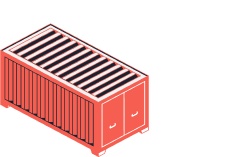
Full container load (FCL)
FCL, or Full Container Load, refers to the exclusive use of a 20'ft or 40'ft container for shipping goods. In the realm of FCL shipping, only your goods fill this container, making it a more cost-effective choice for larger volumes. Typically, choosing FCL becomes economical when shipping more than 13/14/15 CBM of goods. A real-life scenario might be a Thai furniture manufacturer dispatching a large order of wooden tables to a reseller in Iraq. The volume of product makes FCL a natural choice given its cost-benefit and safety, as the container remains sealed from origin to destination. The cost implications of FCL can vary, but typically an FCL shipping quote is less per unit volume than LCL because fixed costs are spread over the larger volume. While initial costs may be higher, the per-unit shipping cost decreases with volume, making FCL an economical choice for larger shipments. Still, it's critical to acquire comprehensive FCL shipping quotes and compare them with LCL options to ensure you're making the most cost-effective decision for your specific shipment needs.
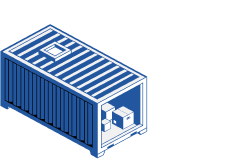
Less container load (LCL)
Definition: LCL, or Less than Container Load, is a type of shipping where your goods share space with others in a single container. This is a cost-effective option for low-volume shipments. When to Use: Opt for LCL shipping between Thailand and Iraq when your cargo is less than 15 Cubic Meters (CBM). It provides flexibility since you don't need to wait until you have enough goods to fill an entire container. Example: Suppose your business needs to deliver 10 CBM of handmade Thai ceramics to a buyer in Iraq. LCL would be a better choice as your cargo doesn’t reach the full container capacity. Cost Implications: With LCL freight, you save money by only paying for the space you use in the container. However, bear in mind, LCL shipment rates can be influenced by several factors including destination charges, warehouse handling fees, customs charges, among others. Thus, while affordable for small volumes, LCL could become more expensive as the volume increases due to these additional charges.
Hassle-free shipping
Looking to ship between Thailand and Iraq but unsure about consolidation or full container? DocShipper, your trusty freight forwarder, is here to simplify the ordeal. Our ocean freight experts can pinpoint the best possible option for you, considering your cargo's weight, volume, and nature. We're all about making cargo shipping a fuss-free affair for businesses. So why wait? Connect with us for a free estimation and let's set sail towards seamless shipping.
How long does sea freight take between Thailand and Iraq?
Sea freight between Thailand and Iraq takes on average between 20and 30 days. These shipping times depend on multiple factors, from the specifics of the exiting and entering ports to the type and weight of your goods. For a customized and precise estimate, you might want to reach out to freight forwarders like DocShipper to help navigate complexities and provide a tailored quote.
Here’s an illustrative table revealing typical sea freight durations between the major freight ports in Thailand and Iraq:
From (Thailand) To (Iraq) Average Transit Time (days) Laem Chabang Umm Qasr 21 Bangkok Umm Qasr 22 Songkhla Umm Qasr 26 Sattahip Umm Qasr 21Note: The transit times pretend, for illustration purposes, as placeholders until the actual times are ascertained.
How much does it cost to ship a container between Thailand and Iraq?
Deciphering ocean freight rates between Thailand and Iraq isn’t a one-size-fits-all process. Factors like Point of Loading, Point of Destination, the carrier in use, the nature of your goods, and even monthly market fluctuations can cause the shipping cost per CBM to vary greatly. But worry not! Our team of seasoned shipping specialists is always ready to crunch the numbers. We dig deep into the specifics of your shipment, taking into consideration all relevant factors to provide an optimized, case-by-case quote. Rest assured, our commitment is to always offer you the best shipping solution at the most competitive rate.
Special transportation services
Out of Gauge (OOG) Container
Definition: An OOG container is a specialty transport structure designed to handle Out of gauge cargo that exceeds standard container dimensions. Suitable for: Oversized cargo like heavy machinery, construction equipment, windmill parts, industrial equipment, etc. Examples: Transporting larger agricultural equipment or an oversized generator from Thailand to Iraq. Why it might be the best choice for you: If your business deals with oversized or heavy cargo, navigating the logistics can be challenging. An OOG container offers a secure way to navigate these complexities while ensuring safe delivery.
Break Bulk
Definition: Break Bulk refers to the shipping of goods that are loaded individually rather than in shipping containers. Suitable for: Large items which can’t be containerized like boats, heavy machinery, cranes, or construction equipment. Examples: Shipping a yacht or oversized turbines from Thailand to Iraq. Why it might be the best choice for you: If your cargo cannot be efficiently containerized or is too large, the Break Bulk method offers the flexibility to ship diverse cargo types.
Dry Bulk
Definition: Dry Bulk refers to the shipping of large amounts of homogenous, loose cargo load like coal, grain, or ore. Suitable for: Commodities that are unpackaged and are shipped in large quantities. Examples: Shipping vast amounts of rice, or minerals from Thailand to Iraq. Why it might be the best choice for you: This method proves cost-effective and efficient for loose, free-flowing cargo that aggregates in large quantities.
Roll-on/Roll-off (Ro-Ro)
Definition: This method involves vehicles being driven or towed onto the ro-ro vessel, providing seamless movement. Suitable for: Vehicles, trailers, caravans, trucks or anything that can be rolled on and off the shipping vessel. Examples: Importing/exporting cars or heavy-duty trucks between Thailand and Iraq. Why it might be the best choice for you: Provides an easy, efficient way for businesses shipping vehicles to achieve seamless transport and mitigate risks associated with handling.
Reefer Containers
Definition: A reefer container is a refrigerated container used predominantly in the shipment of perishable goods. Suitable for: Perishable foodstuff, pharmaceuticals or any cargo needing a specific, constant temperature. Examples: Transporting seafood, dairy products, or temperature-sensitive pharmaceuticals from Thailand to Iraq. Why it might be the best choice for you: For businesses dealing with temperature-sensitive goods, reefer containers offer a reliable method to maintain product integrity throughout transportation.
Dealing with international shipping from Thailand to Iraq can be complex, but DocShipper ensures a smooth experience. Feel free to contact us and receive your free shipping quote in less than 24h. Your logistics needs are our priority.

Air freight between Thailand and Iraq
When it comes to fast and reliable shipping between Thailand and Iraq, air freight emerges as a strong contender, especially for small, valuable items like electronics or high-end fashion. Fast-paced industries require speedy delivery and air freight caters to just that, zipping your goods across borders swiftly, and often cost-effectively.
However, the pricey world of air freight can be a labyrinth for those unprepared. Common missteps include incorrectly estimating the shipment price, often due to miscalculating the weight of their goods – think of it like baking a cake but messing up your measurements, a small mistake can lead to quite the disaster. Hidden costs lurk in the shadows too, catching unwary shippers off-guard, like a sudden rainstorm at a picnic. Stay tuned to this guide for discovering best practices and avoiding these pitfalls in the future.




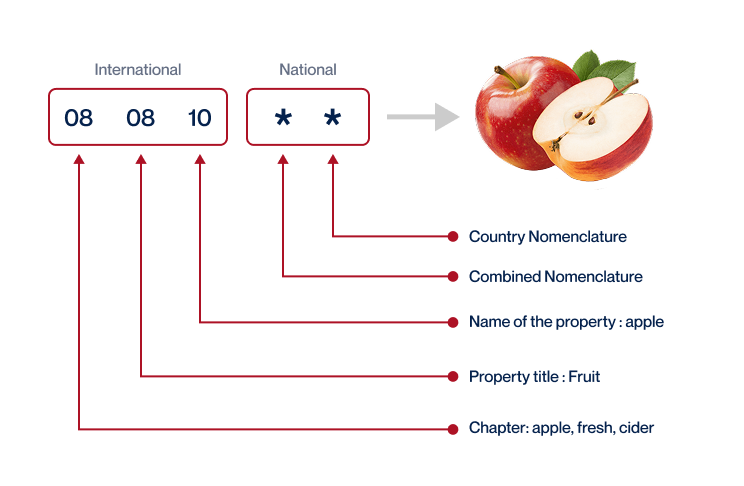
Contact Details for Customs Authorities
Thailand Customs

Official name: The Customs Department of Thailand Official website: http://www.customs.go.th/
Iraq Customs
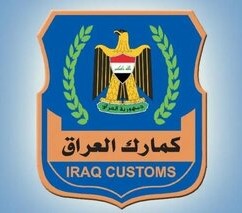
Official name: General Commission of Customs of Iraq Official website: http://www.customs.mof.gov.iq/
Get Started with Siam Shipping
Your first steps with Siam Shipping
Additional logistics services
Warehousing
Finding dependable storage in Thailand for your goods destined for Iraq can be a hefty challenge. Ensuring optimal conditions like temperature control, particularly for perishable items or electronics, is equally tough. But the right warehousing solution can simplify the journey and maintain product integrity. Keen for in-depth insights? Check out comprehensive details at our dedicated page: Warehousing.
Packing
Shipping goods from Thailand to Iraq means battling varying climates. That's where our Packaging and Repackaging services come in handy, ensuring your products reach their destination in impeccable conditions. Our trusted agents can tailor the packaging of your tea leaves or auto parts to withstand the journey's demands. Doubts about fragility or perishables? We've got solutions tailor-made for you. Click here for more info on our dedicated page: Freight packaging.

Transport Insurance
Transporting goods often presents risks like damage or loss, risks that fire insurance doesn't cover. It’s not like covering a stationary building. Cargo Insurance provides a safety net, mitigates the uncertainties, and keeps your business moving. For instance, damage due to rough handling at ports can lead to big losses. But, with this cover, you're secured. More info on our dedicated page: Cargo Insurance.
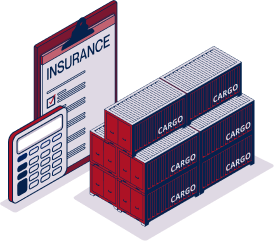
Household goods shipping
Shipping personal effects from Thailand to Iraq can certainly feel like a puzzle. Whether it's heirlooms, furniture, or art, we handle your delicate and bulky items with the utmost care. Just like we did for an antique shop moving from Bangkok to Baghdad. You can trust our flexibility to accommodate every detail of your journey. More info on our dedicated page: Shipping Personal Belongings.
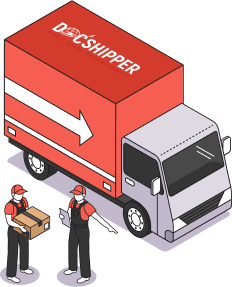
Procurement in Thailand
Sourcing products from Thailand for your Iraq-based business? Let DocShipper steer you through the procurement tricky waters. Our team bridges language gaps, locates reputable suppliers in Asia and East Europe, and handles the complete procurement process. Picture this: no hiccups, just smooth sourcing. Want to dive deeper? Check out more details at our dedicated page: Sourcing services.

Quality Control
Quality control is a crucial step when shipping from Thailand to Iraq. Inspections ensure your goods meet set standards, avoiding costly returns or rejections. Picture this – you're shipping customized furniture pieces. With quality inspections, you can spot any production defects or inconsistencies early, saving you time and resources. Trust in our quality control service to safeguard your business. Find out more on our Quality Inspection page.
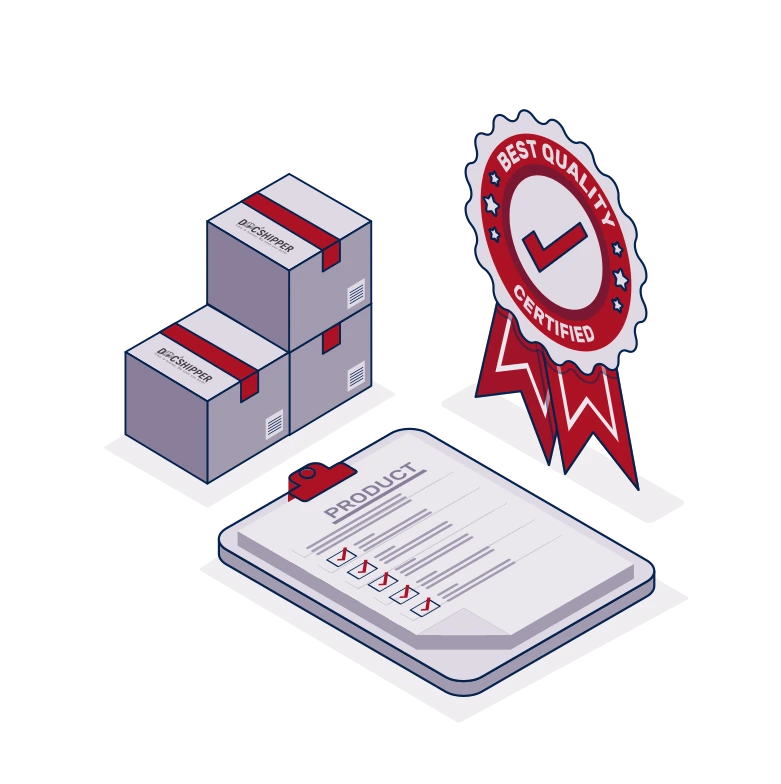
Conformité des produits aux normes
Shipping goods involves adhering to unique regulatory norms of each country. Our Product Compliance Services provide you with robust testing in our laboratories to obtain certification and ensure your goods meet all requisite regulations. Let's make complexities of regulatory compliances hassle-free, and steer clear of unnecessary customs complications! More info on our dedicated page: Product Compliance Services.





